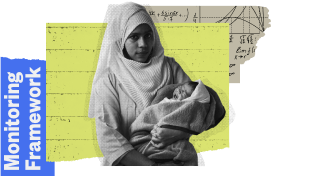Bangladesh
Download full country profile
 172,075,200
Total Population
172,075,200
Total Population
A dispute exists between the Governments of Argentina and the United Kingdom of Great Britain and Northern Ireland concerning sovereignty over the Falkland Islands (Malvinas).
The boundaries and names shown and the designations used on this map do not imply official endorsement or acceptance by the United Nations.
Bangladesh’s Population dynamics Data


Total Fertility Rate (births per woman)
Adolescent (15-19 years) Birth Rate (births per 1,000 girls)
Maternal Mortality Ratio (Per 100,000 live births)
Bangladesh’s national commitment
At the Nairobi Summit, the People’s Republic Bangladesh committed to reduce unmet need for family planning, ensuring the availability and access to all family planning methods and contraceptives for everyone, with specific attention to adolescents and young married couples. Bangladesh has also committed to reducing maternal mortality.
In Bangladesh, unmet need for family planning is higher in rural areas than in urban areas, and lowest among those women with no education
and those women living in the second poorest households’ quintile. Demand for family planning satisfied by modern methods is fairly similar in urban and rural areas of the country, and decreases slightly with higher levels of education and household wealth.
Bangladesh’s maternal mortality ratio has been declining from 2000 to 2017,
the most recent year for which data is available and the year in which it was estimated to be 173 deaths per 100,000 live births.
Bangladesh’s adolescent birth rate has decreased from 1990 to 2020 but is still the highest in the region.
Births among Bangladeshi women 20-24 years before age 15 and before age 18 are also the highest in the region.
Most births before age 15 occur among women who have no and only primary education, and those women in the poorest households.
Births before age 18 are 2.7 times higher for women with no education compared to women with higher education; they are also 1.5 times higher among women living in the poorest households compared with women living in the wealthiest households.
In Bangladesh, 51% of women aged 20-24 years were married before age 18, with 15% married before age 15, which are the highest rates in the region.
Marriage before age 18 is higher in rural areas than urban areas (54% versus 44% respectively), and it decreases with higher levels of education and with household wealth.
Since the Nairobi Summit, the ICPD25 agenda and commitments have been advocated during high-level policy dialogues and at national and regional forums and consultation workshops organized by the Parliament of Bangladesh. Actions have been taken to address sexual harassment and provide security and protection to stop child marriage.











































